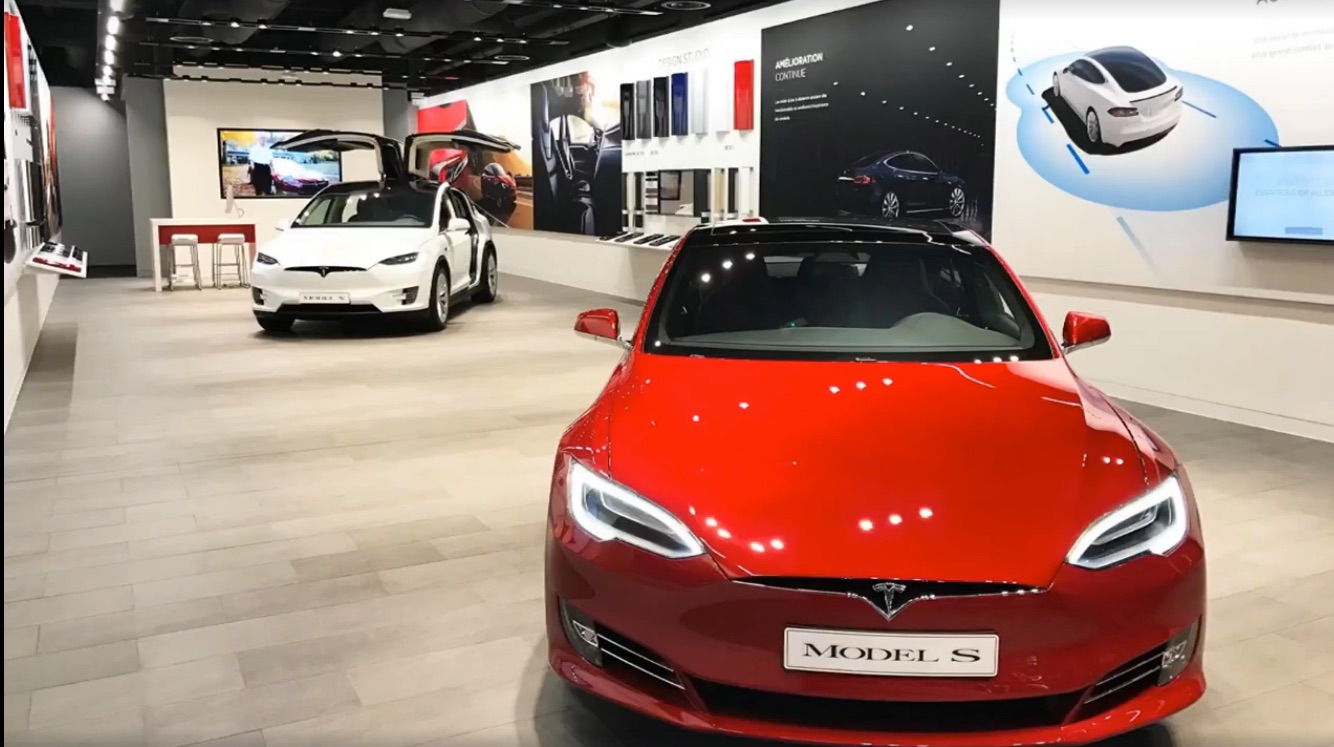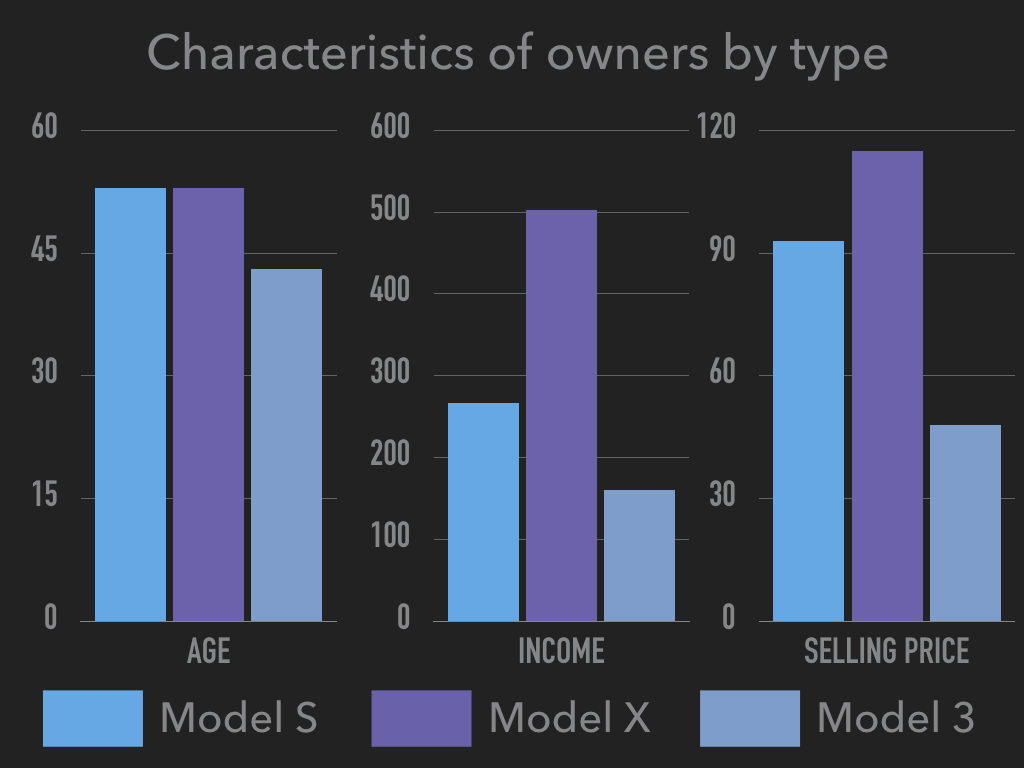News
New survey compares demographic of Tesla Model X vs. Model S buyer

A new survey that polled nearly 500 Tesla owners, reservation holders, and enthusiasts found several key differences between Model S and Model X owners. This is my largest Tesla-focused study to date and is a follow up to last year’s 22-question owner’s satisfaction survey. The latest study finds both new interesting data and reaffirms Tesla’s high customer satisfaction rating, while also taking a peek at Model 3 demand.
Model X vs. Model S Owners
Differences in satisfaction between Model X and Model S owners show, Model X owners are 20% more likely to have had “non-routine” maintenance done. Despite this occurrence, 95% of Model X owners report that their vehicle “held up extremely well”. Both Model S and X owners alike rate the service department at 89% satisfied.
Overall, Model X owners spent on average 29% more on their vehicles than Model S owners, with the average price of their Model X purchase ringing in at $125,000 compared to $97,000 for Model S buyers. Both Model S and X owners had an average age of 53 years old. Model X owners showed a significant bump in household annual income versus Model S owners, ticking in at an average of $503,000 and $267,000 respectively.
Despite the fact that income levels of both Model S and X owners place them near the top 1% of household incomes in the United States, 94% of current owners claim that this is the most expensive vehicle they have ever purchased.
When asked how much one would pay for a 30% battery upgrade in 3 years, both Model S and X owners said they would pay over $5,900 for a battery upgrade. Assuming an average battery size of 83 kWh, based on the average of a 75 kWh and 90 kWh pack, we can assume a 30% increase in capacity would be somewhere on the level of 25 kWh. This would put the retail price for the upgrade at ~$235 per kWh, which seems reasonable given Tesla CEO Elon Musk’s prediction that battery costs could dip as low as $100 per kWh by 2020.
Model 3 Owners
Of Model 3 reservation holders, they expect to spend just over $48,000 on their Model 3. By comparison, preliminary data from crowdsourced database Model3Tracker.info shows that existing Tesla owners will spend 7% more than first time owners and pay an average price of $55,084, based on contributors intended Model 3 configurations.
Model 3 reservation holders held an 82.5% satisfaction rate with the reservation process.
The average age of a Model 3 reservation holder polled was 43 years, with an annual household income of $160,000. On average, Model 3 reservation holders indicated that they have been following Tesla for over 5 years.
Overall Results
Overall, 97% of respondents believed that Tesla is on the right track and 92% of owners believed that they will purchase a Tesla in the future. Additionally, 56% of owners plan on purchasing a Tesla Energy or SolarCity product in the next 2-3 years. This helps bring insight to the combined merger between SolarCity and Tesla that was completed in 2016.
To receive the full results of the survey you can message us on Facebook or follow our Facebook page where we will be dropping some additional results. If you would like to be included in future Tesla owners/fans studies, you can enroll yourself here.

Elon Musk
Tesla’s Elon Musk: 10 billion miles needed for safe Unsupervised FSD
As per the CEO, roughly 10 billion miles of training data are required due to reality’s “super long tail of complexity.”

Tesla CEO Elon Musk has provided an updated estimate for the training data needed to achieve truly safe unsupervised Full Self-Driving (FSD).
As per the CEO, roughly 10 billion miles of training data are required due to reality’s “super long tail of complexity.”
10 billion miles of training data
Musk comment came as a reply to Apple and Rivian alum Paul Beisel, who posted an analysis on X about the gap between tech demonstrations and real-world products. In his post, Beisel highlighted Tesla’s data-driven lead in autonomy, and he also argued that it would not be easy for rivals to become a legitimate competitor to FSD quickly.
“The notion that someone can ‘catch up’ to this problem primarily through simulation and limited on-road exposure strikes me as deeply naive. This is not a demo problem. It is a scale, data, and iteration problem— and Tesla is already far, far down that road while others are just getting started,” Beisel wrote.
Musk responded to Beisel’s post, stating that “Roughly 10 billion miles of training data is needed to achieve safe unsupervised self-driving. Reality has a super long tail of complexity.” This is quite interesting considering that in his Master Plan Part Deux, Elon Musk estimated that worldwide regulatory approval for autonomous driving would require around 6 billion miles.
FSD’s total training miles
As 2025 came to a close, Tesla community members observed that FSD was already nearing 7 billion miles driven, with over 2.5 billion miles being from inner city roads. The 7-billion-mile mark was passed just a few days later. This suggests that Tesla is likely the company today with the most training data for its autonomous driving program.
The difficulties of achieving autonomy were referenced by Elon Musk recently, when he commented on Nvidia’s Alpamayo program. As per Musk, “they will find that it’s easy to get to 99% and then super hard to solve the long tail of the distribution.” These sentiments were echoed by Tesla VP for AI software Ashok Elluswamy, who also noted on X that “the long tail is sooo long, that most people can’t grasp it.”
News
Tesla earns top honors at MotorTrend’s SDV Innovator Awards
MotorTrend’s SDV Awards were presented during CES 2026 in Las Vegas.

Tesla emerged as one of the most recognized automakers at MotorTrend’s 2026 Software-Defined Vehicle (SDV) Innovator Awards.
As could be seen in a press release from the publication, two key Tesla employees were honored for their work on AI, autonomy, and vehicle software. MotorTrend’s SDV Awards were presented during CES 2026 in Las Vegas.
Tesla leaders and engineers recognized
The fourth annual SDV Innovator Awards celebrate pioneers and experts who are pushing the automotive industry deeper into software-driven development. Among the most notable honorees for this year was Ashok Elluswamy, Tesla’s Vice President of AI Software, who received a Pioneer Award for his role in advancing artificial intelligence and autonomy across the company’s vehicle lineup.
Tesla also secured recognition in the Expert category, with Lawson Fulton, a staff Autopilot machine learning engineer, honored for his contributions to Tesla’s driver-assistance and autonomous systems.
Tesla’s software-first strategy
While automakers like General Motors, Ford, and Rivian also received recognition, Tesla’s multiple awards stood out given the company’s outsized role in popularizing software-defined vehicles over the past decade. From frequent OTA updates to its data-driven approach to autonomy, Tesla has consistently treated vehicles as evolving software platforms rather than static products.
This has made Tesla’s vehicles very unique in their respective sectors, as they are arguably the only cars that objectively get better over time. This is especially true for vehicles that are loaded with the company’s Full Self-Driving system, which are getting progressively more intelligent and autonomous over time. The majority of Tesla’s updates to its vehicles are free as well, which is very much appreciated by customers worldwide.
Elon Musk
Judge clears path for Elon Musk’s OpenAI lawsuit to go before a jury
The decision maintains Musk’s claims that OpenAI’s shift toward a for-profit structure violated early assurances made to him as a co-founder.

A U.S. judge has ruled that Elon Musk’s lawsuit accusing OpenAI of abandoning its founding nonprofit mission can proceed to a jury trial.
The decision maintains Musk’s claims that OpenAI’s shift toward a for-profit structure violated early assurances made to him as a co-founder. These claims are directly opposed by OpenAI.
Judge says disputed facts warrant a trial
At a hearing in Oakland, U.S. District Judge Yvonne Gonzalez Rogers stated that there was “plenty of evidence” suggesting that OpenAI leaders had promised that the organization’s original nonprofit structure would be maintained. She ruled that those disputed facts should be evaluated by a jury at a trial in March rather than decided by the court at this stage, as noted in a Reuters report.
Musk helped co-found OpenAI in 2015 but left the organization in 2018. In his lawsuit, he argued that he contributed roughly $38 million, or about 60% of OpenAI’s early funding, based on assurances that the company would remain a nonprofit dedicated to the public benefit. He is seeking unspecified monetary damages tied to what he describes as “ill-gotten gains.”
OpenAI, however, has repeatedly rejected Musk’s allegations. The company has stated that Musk’s claims were baseless and part of a pattern of harassment.
Rivalries and Microsoft ties
The case unfolds against the backdrop of intensifying competition in generative artificial intelligence. Musk now runs xAI, whose Grok chatbot competes directly with OpenAI’s flagship ChatGPT. OpenAI has argued that Musk is a frustrated commercial rival who is simply attempting to slow down a market leader.
The lawsuit also names Microsoft as a defendant, citing its multibillion-dollar partnerships with OpenAI. Microsoft has urged the court to dismiss the claims against it, arguing there is no evidence it aided or abetted any alleged misconduct. Lawyers for OpenAI have also pushed for the case to be thrown out, claiming that Musk failed to show sufficient factual basis for claims such as fraud and breach of contract.
Judge Gonzalez Rogers, however, declined to end the case at this stage, noting that a jury would also need to consider whether Musk filed the lawsuit within the applicable statute of limitations. Still, the dispute between Elon Musk and OpenAI is now headed for a high-profile jury trial in the coming months.










